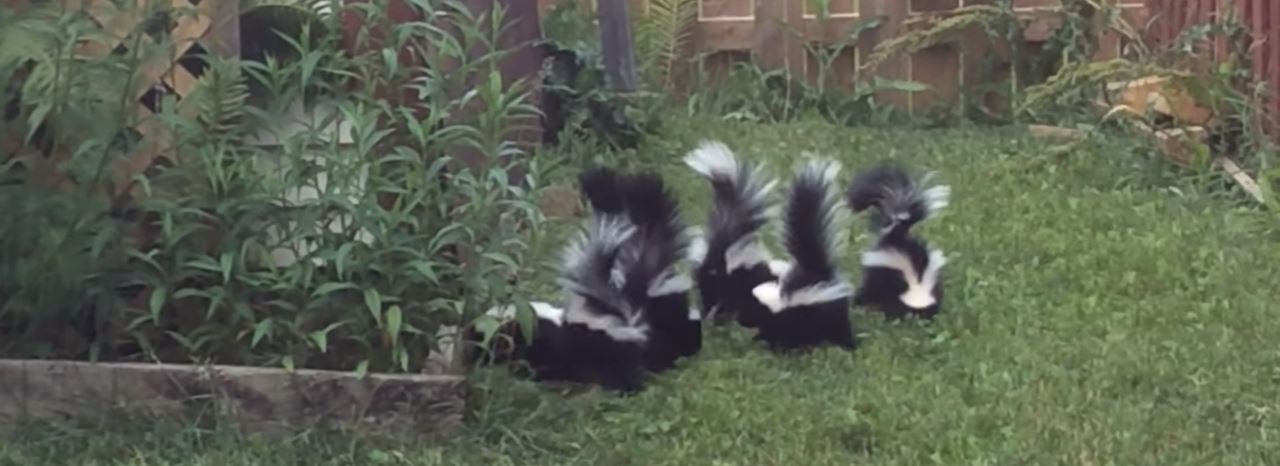Why Do Skunks Have White Stripes?
Once you catch a whiff of a skunk, you will know that, NO!, that was not a cute little black and white kitty you saw! Skunks are very well-known to have a terrible, pungent odor, but why do they have white stripes?
There are twelve species of skunks, which vary in size from 15 ½ to 37 inches long, and weigh between 1 and 18 pounds. They have somewhat elongated bodies, similar to weasels, with short, muscular legs. Their tail is long and fluffy, and they have long, sharp front claws for burrowing.
Although the most common coloration is black and white, some skunks are brown or gray, and some are even cream-colored. Whatever their ground color, all skunks have stripes from birth on. Some species have one large, thick white strips, while others have two thin stripes, spots and stripes, and some even have striped legs.
Skunks eat both plants and other animals, with grubs and insects/larvae taking first place in their diet. They will also eat other animals’ dead bodies alongside roads or in the woods. In addition, skunks enjoy berries, roots, nuts, and other foliage. Skunks will eat garbage if it is not well-sealed, and will often come close to homes to eat pet food that has been left outside.
Skunks have a dormant period during the cold months, when the females will huddle together in dens (males prefer their own dens), but while they are inactive and do not eat, they are not truly hibernating.
Skunks have terrific senses of smell and hearing, but very poor eyesight, which is why they are often seen hit on the road. They just are unable to see the cars coming in time to run across the road. While they are known to live up to seven years in the wild, many do not make it past a year or two.

Mating occurs in the springtime, with kits being born in early May. One female is gravid for about 66 days, before having 4 to 8 kits, which stay with their mother for about a year, when it is time for them to pair up and have kits of their own.
The most well-known thing about the skunks is their anal scent glands. Two kidney-shaped glands reside in their rear, one on either side of their anal opening. There are specialized muscles behind them that make the spray fast and accurate to a target up to 10 feet away! They are known to ward of coyotes and bears with just their scent, which is foul and pungent.
They are, however, somewhat hesitant to use their spray, as they have only about 5 “sprays” of 3cc each time they spray. It takes up to ten days to regenerate enough spray for the muscles to work again. Instead, skunks will hiss, stomp their feet, “fluff up” their tail, and act aggressive, all in the effort to warn off predators without having to use their spray. If all efforts fail, they will then not be reluctant to spray at their enemy. Their only true enemies in the wild are the great horned owl, which seems impervious to their spray.
So, why do skunks have the white stripes? Scientists believe that their coloration is both a warning to predators as to where the skunk is and where the spray comes from. Since skunks do not tend to bite, this is their main protectant, and as such, they wish predators to know that they will not hesitate to spray them if spooked.
That said, the old myth of tomato juice to “kill the scent” of a skunk spray has been mostly debunked. It would take enormous amounts of tomato juice, and it would only be minorly effective. The best OTC remedy is to use a mixture of peroxide, dish soap, and baking soda, with copious amounts of rinse water.
Read the How to get rid of skunks page for helpful information and to learn more about Why Do Skunks Have White Stripes?
Why Do Skunks Have White Stripes?

